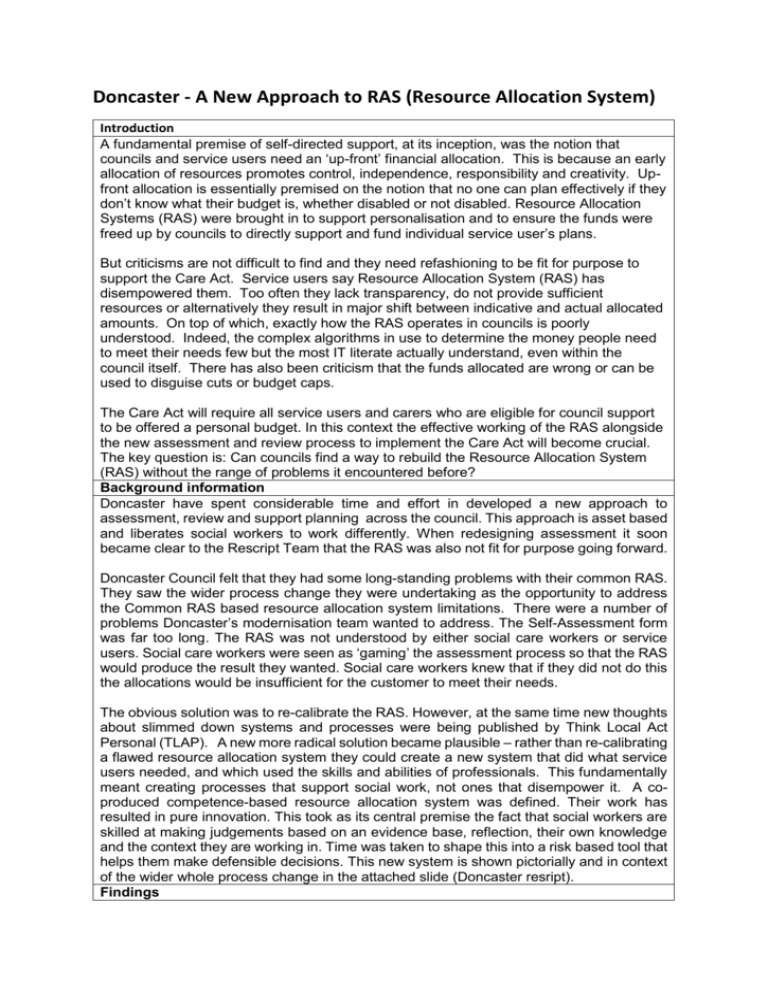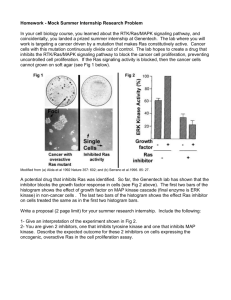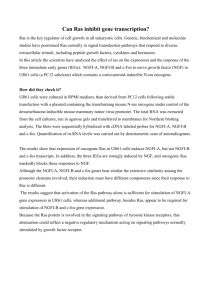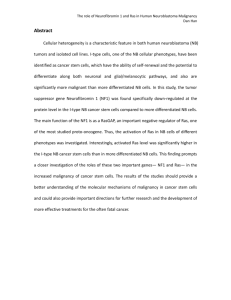Case study 2: Doncaster Council - Assessment/Resource Allocation
advertisement

Doncaster - A New Approach to RAS (Resource Allocation System) Introduction A fundamental premise of self-directed support, at its inception, was the notion that councils and service users need an ‘up-front’ financial allocation. This is because an early allocation of resources promotes control, independence, responsibility and creativity. Upfront allocation is essentially premised on the notion that no one can plan effectively if they don’t know what their budget is, whether disabled or not disabled. Resource Allocation Systems (RAS) were brought in to support personalisation and to ensure the funds were freed up by councils to directly support and fund individual service user’s plans. But criticisms are not difficult to find and they need refashioning to be fit for purpose to support the Care Act. Service users say Resource Allocation System (RAS) has disempowered them. Too often they lack transparency, do not provide sufficient resources or alternatively they result in major shift between indicative and actual allocated amounts. On top of which, exactly how the RAS operates in councils is poorly understood. Indeed, the complex algorithms in use to determine the money people need to meet their needs few but the most IT literate actually understand, even within the council itself. There has also been criticism that the funds allocated are wrong or can be used to disguise cuts or budget caps. The Care Act will require all service users and carers who are eligible for council support to be offered a personal budget. In this context the effective working of the RAS alongside the new assessment and review process to implement the Care Act will become crucial. The key question is: Can councils find a way to rebuild the Resource Allocation System (RAS) without the range of problems it encountered before? Background information Doncaster have spent considerable time and effort in developed a new approach to assessment, review and support planning across the council. This approach is asset based and liberates social workers to work differently. When redesigning assessment it soon became clear to the Rescript Team that the RAS was also not fit for purpose going forward. Doncaster Council felt that they had some long-standing problems with their common RAS. They saw the wider process change they were undertaking as the opportunity to address the Common RAS based resource allocation system limitations. There were a number of problems Doncaster’s modernisation team wanted to address. The Self-Assessment form was far too long. The RAS was not understood by either social care workers or service users. Social care workers were seen as ‘gaming’ the assessment process so that the RAS would produce the result they wanted. Social care workers knew that if they did not do this the allocations would be insufficient for the customer to meet their needs. The obvious solution was to re-calibrate the RAS. However, at the same time new thoughts about slimmed down systems and processes were being published by Think Local Act Personal (TLAP). A new more radical solution became plausible – rather than re-calibrating a flawed resource allocation system they could create a new system that did what service users needed, and which used the skills and abilities of professionals. This fundamentally meant creating processes that support social work, not ones that disempower it. A coproduced competence-based resource allocation system was defined. Their work has resulted in pure innovation. This took as its central premise the fact that social workers are skilled at making judgements based on an evidence base, reflection, their own knowledge and the context they are working in. Time was taken to shape this into a risk based tool that helps them make defensible decisions. This new system is shown pictorially and in context of the wider whole process change in the attached slide (Doncaster resript). Findings The key innovation here was the way the RAS has now becomes part of the conversation in the council between the social worker and service user rather than a remote financial process run by managers or IT staff. It now fits in with the wider changes the council is making to its whole process. Using a RAS focused on outcomes and as part of an assets based approach has been brave. Here individuals are encouraged to use their own and the family/community resources to meet needs requires a much simpler decision making tool for what the council provides as financial resource. Doncaster call this “The RAS Grid.” This approach definitely sits within the spirit of the Care Act. Abandoning the common RAS was a big step for Doncaster. But, there have been really positive outcomes to designing and calibrating a new outcomes based RAS. Practitioners revisited lots of cases their colleagues assessed and they have seen variance in quality of this practice especially around assessing risk and eligibility. They have poured through reams of paperwork, piecing together the information needed to understand why interventions and packages of care were put in place as they were with many gaps needing to be filled. The old supported self-assessment and RAS did not lend itself to this. This approach required a strong team bond, an ability to challenge senior leadership citing a firm evidence base and innovative system wide redesign promising significant efficiencies in the context of a reducing resource envelope. It starts with Needs.Needs established at assessment are grouped in the RAS Grid and the exact groupings can be a varied locally. It looks at Risk. The risk being evaluated in the RAS Grid is the risk to the individual if the eligible unmet needs resulting from the asset-based assessment are not met. The impact of this risk (the hazard) has four possible levels of severity. It focuses on the whole person. Once the conversation between service user and professional results in an agreed understanding of needs areas and risk, an agreed amount of money can immediately be allocated subject to review.Doncaster think they have what is needed to move forward : An asset-based assessment, coproduced decision on the unmet need areas, and a coproduced decision on the risk to the customer if these needs are not met. The emphasis here is not on computation but on competent judgement about the ‘whole picture’, a professional’s skill in assessing what, at a whole person level, is going on and what it means. In short we see consistent social care worker professional competencies being applied. There is work still to be done though as seeing the ‘big picture’ is not something that social workers are always that good at. Changing from the old resource allocation system to a social work competence-based resource allocation process clearly has implication for the workforce, and its culture. Louise “I now have a greater understanding of how sections within the department interlink and how one change to a process may affect several departments.” Solution Fundamentally this approach avoids complex obscure algorithms. Unlike the common RAS approach where a community care assessment is ‘translated’ by an algorithm into a cash allocation, a co-production competence–based approach used here means that social care workers have the job of talking to the service user and considering their needs with them. They must also explore the risks to the person if identified needs are not met. Both these things require a commitment to co-production and competent professional judgement. This is where the council’s wider work to develop a culture which supports and trains all staff to engage with their values and develop their skills to hold creative conversations with service users was an essential backdrop. A tool to support this process was developed and is referred to as a simple ‘RAS Grid.’ The key questions include ; How can we move to a transparent RAS whist managing diminishing ressources ? Do we have the courage of Doncaster to take this leap?




